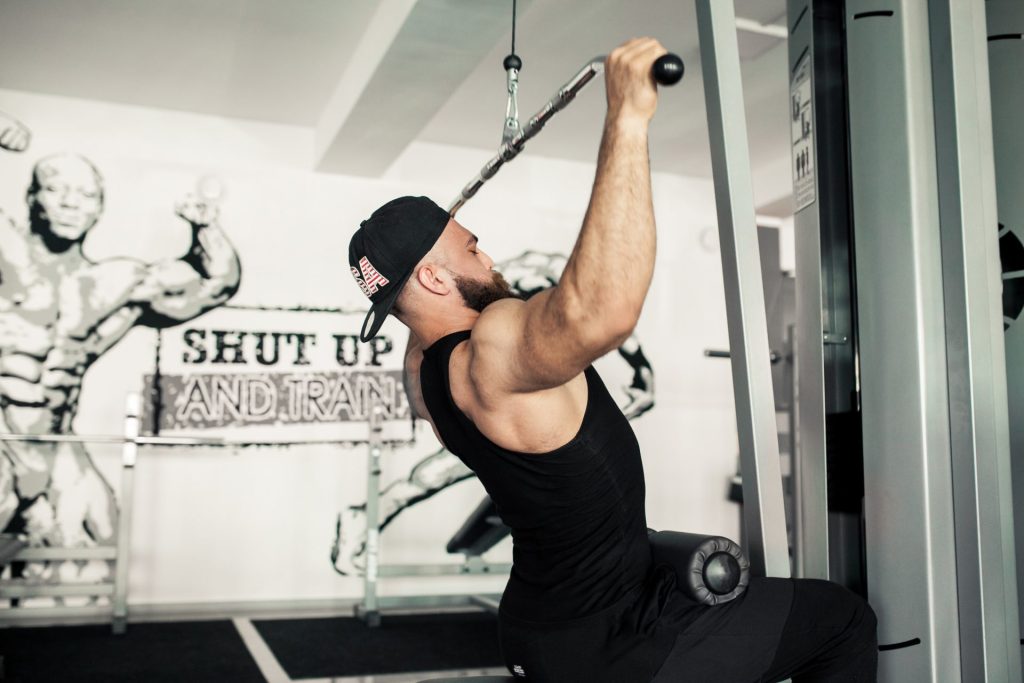Are you tired of having underdeveloped traps that make your physique look unbalanced? Building bigger and stronger trapezius muscles can not only enhance your overall appearance but also improve your posture and upper body strength. If you’ve been struggling to see results in this area, it may be time to reevaluate your training routine and avoid common pitfalls.
The traps, or trapezius muscles, are located on either side of your neck and upper back. They play a crucial role in stabilizing the shoulders and neck, as well as facilitating movements like shrugging, lifting, and pulling. Despite their importance, many individuals struggle to effectively target and develop these muscles, leading to subpar results.
If you’re dedicated to getting bigger traps, it’s essential to focus on specific exercises and techniques that directly stimulate these muscles. However, it’s worth noting that building bigger traps requires a holistic approach that incorporates proper form, progressive overload, and adequate rest and recovery.
In this article, we will explore the most common mistakes to avoid when trying to develop your traps and provide actionable tips to help you get the results you desire. So, let’s dive in and unlock the secrets to building impressive traps.
Contents
Understanding The Trapezius Muscles
The trapezius muscles play a crucial role in both daily life and workouts. Understanding their anatomy is essential for targeting them effectively.
The trapezius muscles are a pair of large, triangular muscles that extend from the base of the skull down to the middle of the back and across the shoulders.
They are responsible for various movements and functions, including shrugging the shoulders, rotating the shoulder blades, and maintaining good posture. By targeting different sections of the traps through exercises such as shrugs and rows, you can strengthen and tone these muscles, improving your overall upper body strength and stability.
The Importance Of Proper Form And Technique
Preventing Injuries
Proper form and technique are crucial when it comes to any physical activity, and trap exercises are no exception. Using incorrect form can put unnecessary strain on your muscles, joints, and ligaments, increasing your risk of injury. By paying attention to your form and practicing proper technique, you can reduce the likelihood of overuse injuries or strains.
Maximizing Muscle Activation
One of the primary goals of trap exercises is to target and strengthen the trapezius muscles, which are responsible for stabilizing the shoulders and neck. Using proper form and technique allows for maximum muscle activation. This means that you’ll be effectively targeting your traps and getting the most out of each exercise.
Developing Symmetry And Proportions
In addition to strengthening the traps, proper form and technique can help develop symmetry and proportionality in your physique. By using correct form, you’ll be able to evenly target both sides of your body, preventing imbalances and promoting a proportionate appearance.
Progressing Safely
Whether you’re a beginner or an experienced lifter, following proper form is essential for consistent progress and preventing plateaus. By using correct technique, you can gradually increase the weight and intensity of your trap exercises, ensuring safe and effective progression over time.
Enhancing Performance In Other Exercises
Strong traps not only contribute to an aesthetically pleasing physique but also play a crucial role in other exercises. Properly developed traps can improve your performance in exercises such as deadlifts, overhead presses, and pull-ups, as they provide stability and support to your upper body.
Engaging The Right Muscles
Using proper form and technique allows you to engage the targeted muscle group effectively. In the case of trap exercises, maintaining proper posture and alignment will ensure that you’re activating the traps rather than relying on compensatory muscles to perform the movement. This will lead to better muscle recruitment and overall exercise effectiveness.
Long-Term Joint Health
Lastly, practicing proper form and technique during trap exercises can contribute to your long-term joint health. By maintaining proper alignment and avoiding unnecessary stress on your joints, you can help prevent joint pain, inflammation, and potential future complications.
Remember, achieving bigger traps isn’t just about lifting heavy weights; it’s about performing each exercise with proper form and technique. By prioritizing these aspects, you can maximize your results, reduce the risk of injuries, and enjoy a more sustainable and healthy fitness journey.
Top Trap-Building Exercises
Deadlifts
Deadlifts are one of the most effective trap-building exercises. They target not only the traps but also the entire posterior chain, including the lower back, glutes, and hamstrings.
Start with a barbell on the ground, bend down with a flat back, and lift the barbell up using your traps and legs. Remember to maintain proper form and gradually increase the weight as you get stronger.
Barbell Shrugs
Barbell shrugs are a classic exercise for targeting the traps. Hold a barbell with an overhand grip, stand with your feet shoulder-width apart, and lift your shoulders up towards your ears. Squeeze your traps at the top of the movement and slowly lower the weight back down. Vary the grip width to target different areas of the traps.
Dumbbell Shrugs
Similar to barbell shrugs, dumbbell shrugs target the traps but allow for a greater range of motion and unilateral training. Hold a dumbbell in each hand, let your arms hang by your sides, and lift your shoulders up towards your ears. Focus on squeezing your traps at the top of the movement and slowly lowering the dumbbells back down.
Farmers Walk
The farmer’s walk not only builds traps but also strengthens your grip and core. Hold a heavy dumbbell or kettlebell in each hand, stand tall, and walk for a designated distance or time. Make sure to maintain a stable core and keep your shoulders pulled back and down to engage your traps throughout the exercise.
Upright Rows
Upright rows target the traps, shoulders, and upper back. Hold a barbell or dumbbells in front of your thighs with an overhand grip, pull the weight up towards the chin, and then lower it back down. Keep your elbows high and focus on squeezing your traps at the top of the movement. Be cautious with your form to avoid shoulder impingement.
Cable Face Pulls
Cable face pulls are a great exercise for targeting the traps and improving posture. Set a cable machine at face height, attach a rope or handle, and stand with your feet shoulder-width apart.
Pull the rope towards your face while squeezing your shoulder blades together. Focus on contracting your traps and upper back muscles. Control the movement and avoid using excessive weight.
Snatch Grip High Pulls
Snatch grip high pulls are an explosive exercise that targets the traps, shoulders, and upper body. Start with a wide grip on a barbell, lower it to just above your knees, and explosively pull the barbell up towards your chin, keeping your elbows high.
Control the descent and repeat for multiple reps. This exercise should be performed with a lighter weight and with proper form to maximize its benefits and reduce the risk of injury.
Remember to consult with a fitness professional to ensure proper form and technique when performing these trap-building exercises. Start with lighter weights and gradually increase as you build strength and confidence.
Avoiding Common Traps Mistakes
Using Too Much Weight
One common mistake when performing trap exercises, such as shrugs or upright rows, is using too much weight. It’s important to start with a weight that you can comfortably handle and gradually increase the weight over time. Using too much weight can lead to poor form and potentially result in injury.
Poor Posture
Maintaining proper posture during trap exercises is crucial for targeting the correct muscles and preventing injury. Avoid rounding your shoulders or hunching over, as this can put undue stress on your neck and upper back. Instead, keep your chest up, shoulders back, and engage your core muscles for stability.
Neglecting Full Range Of Motion
Another common mistake is performing trap exercises with limited range of motion. It’s important to fully extend and squeeze your traps at the top of the movement, and then lower the weight back down in a controlled manner. Avoid shortening your range of motion by not fully raising or lowering the weight, as this can limit the effectiveness of the exercise.
Overlooking Proper Breathing
Proper breathing technique is often overlooked during trap exercises. Remember to exhale during the exertion phase of the movement (lifting the weight) and inhale during the lowering phase. This helps stabilize your core and ensures adequate oxygen flow to your muscles.
Neglecting Warm-Up And Cool-Down
Preparing your muscles for exercise is vital in preventing injuries. Always incorporate a dynamic warm-up, such as arm circles or shoulder rotations, to increase blood flow and warm up the trap muscles. Similarly, finish your workout with a cool-down, which may include static stretches or foam rolling, to promote muscle recovery and prevent stiffness.
Lack Of Variation
Doing the same trap exercises over and over can lead to stagnation and limited progress. Incorporate different variations of trap exercises, such as dumbbell shrugs, cable upright rows, or trap bar deadlifts, to engage your traps from different angles and stimulate muscle growth.
Not Allowing Enough Rest And Recovery
Proper rest and recovery are crucial for muscle growth and preventing overuse injuries. Avoid working your traps too frequently or without adequate rest days in between workouts. Aim for at least 48 hours of recovery time before targeting your trap muscles again.
FAQs
How To Get Bigger Traps At Home?
Engage in exercises that target your trapezius muscles, such as shrugs, upright rows, and resistance band pulls. Perform these exercises regularly with progressive resistance to stimulate muscle growth. Proper nutrition and sufficient rest are also crucial for muscle development.
How To Get A Bigger Neck And Traps?
Incorporate exercises like neck bridges, weighted neck extensions, and shrugs into your workout routine. Be consistent with these exercises, gradually increasing the intensity, and ensure you’re providing your body with enough nutrients and recovery time for muscle growth.
How Long Does It Take For Traps To Get Bigger?
The time it takes to see noticeable trap muscle growth varies from person to person. It depends on factors such as genetics, workout intensity, nutrition, and consistency. Typically, you may start noticing some improvements within a few weeks to a few months of dedicated training. Patience and consistency are key to achieving significant results.
Wrapping Up
In conclusion, developing bigger traps can greatly improve your overall physique and strength. By incorporating compound exercises like deadlifts, shrugs, and upright rows, you can effectively target and build your trapezius muscles. Additionally, proper form and technique are crucial to prevent injury and maximize results.
Remember to vary your exercises, gradually increase weight and intensity, and allow proper recovery time. Fueling your body with a well-balanced diet rich in protein will also support muscle growth and repair.
Building bigger traps not only enhances your appearance but also contributes to better posture, shoulder stability, and overall athletic performance. So, whether you’re a bodybuilder, weightlifter, or fitness enthusiast, incorporating these tips into your routine will help you achieve those sought-after big traps. Keep pushing yourself, stay consistent, and watch your traps grow!




